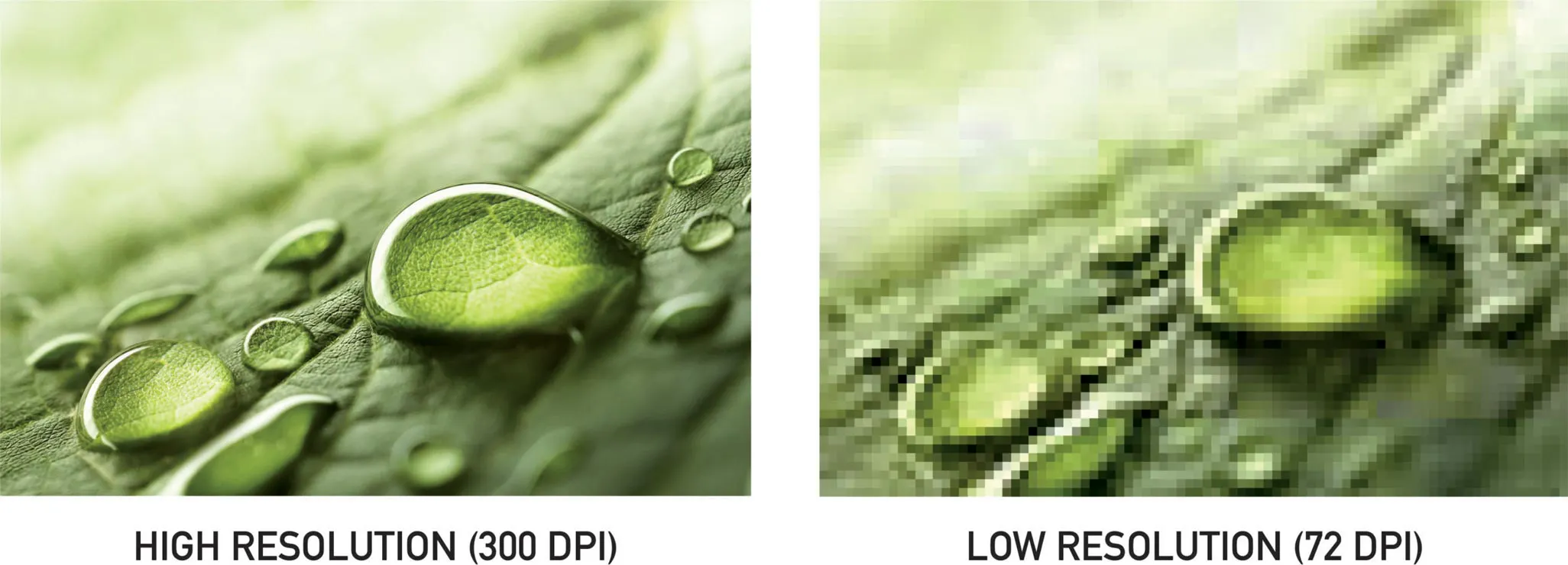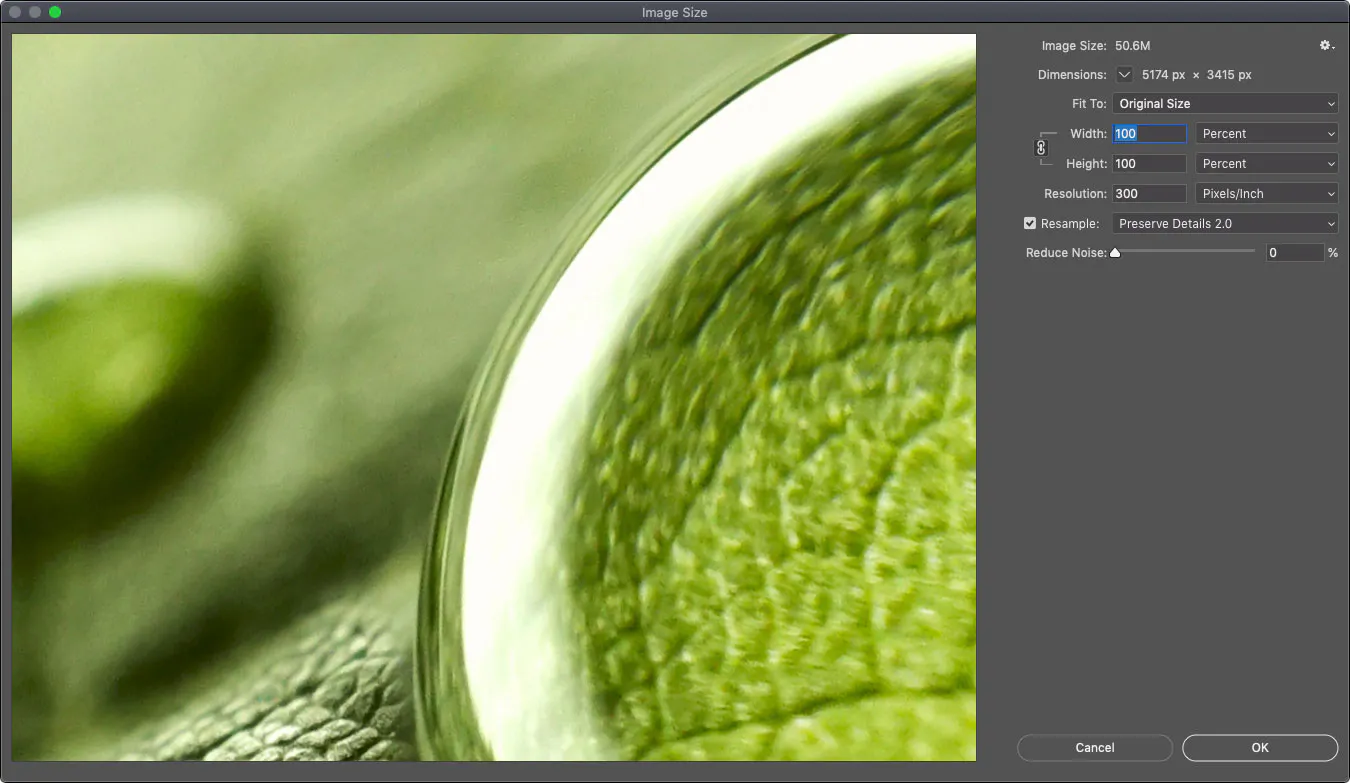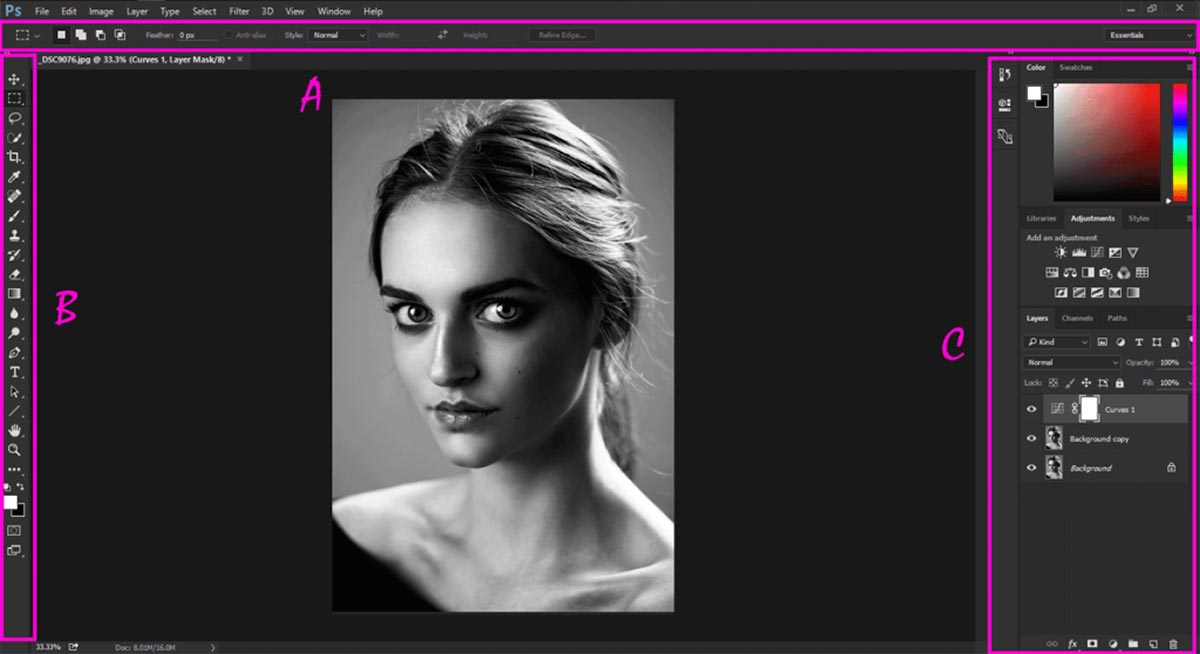PPI, DPI & Image Resolution
What is PPI, DPI and Image Resolution? Why Does it Matter in the Print World?
Understanding image resolution is key to high-quality online printing. This guide explains the differences between pixels, PPI (pixels per inch) and DPI (dots per inch) and why using high-resolution images (typically 300 DPI) is essential for sharp, professional print results. It also outlines best practices for both small and large format printing and why web graphics aren’t suitable for print.
What are pixels, and why do they matter in printing?
In online printing, image resolution plays a huge part in the final outcome of your project. Pixels are the building blocks of an image. Every digital image is made up of thousands or even millions of individual pixels. The more pixels contained within an image, the greater the detail and quality.
The number of pixels makes a huge difference in the quality of your image resolution, as shown below.

What is PPI (pixels per inch), and how does it affect print quality?
PPI (pixels per inch) is the number of pixels contained in a digital image. The density of pixels within a digital image refers to the amount of detail in an image, based on the concentration of pixels. This affects the print size of your design and the quality of the output. For an online printer, an image with a higher PPI tends to be higher quality because it has a greater pixel density.
What is DPI (dots per inch), and why is it important for print?
DPI (dots per inch) refers to the resolution value of a physical printer. In other words, it’s the number of ink dots on a printed piece. DPI primarily concerns the print format, not digital. Printers reproduce an image with tiny dots, and the number of dots per inch affects the amount of detail and overall quality of the print.
Why you shouldn’t use web graphics for printing
We do not recommend using web graphics for print projects. They are commonly created in 72 or 96 PPI, which is considered low-resolution. At that resolution, they don’t contain the amount of information you’ll need for the final printed piece. At 72 or 96 PPI, you’ll see more pixelation on the final printed piece than is visible when viewing it on a screen.
What is Image Resolution? Why Does it Matter for Printing?
Image resolution refers to the level of detail in an image. Raster images are composed of a series of pixels, and as mentioned above, the greater the PPI the greater the print quality.
What is considered a high resolution image for printing?
The best resolution for printing is 300 DPI with placed images at 100% or smaller. Increasing the size of an image will lower its final PPI. At 300 DPI, an image will appear sharp and crisp. This is considered to be high resolution or high-res.
Why you shouldn’t use low resolution images for printing
For small format printing, images below 200 DPI are considered low resolution or low-res. For large format printing, images below 100 DPI are considered low resolution. Low-res images will appear pixelated and blurred after printing even though they might look perfect on your computer screen. This happens because there are not enough pixels per inch to maintain a sharp image.
Smartpress Tip: It’s important to consider how large an image can be while still maintaining its quality and detail. A low-resolution image cannot be made into a high-resolution image – there is no way to add pixels to improve the quality of an image. When in doubt, always work with high-quality images.
Recommended Formatting for Different Print Job Sizes
Small Format Printing Specs
For small format jobs such as brochures or booklets, it is recommended that images for print be saved at 300 DPI, as this will help achieve a high-quality print. To calculate the desired file size, multiply the final printed size of the image in inches by 300. For example, if an image is 4” x 6” on the printed page, 4 x 300 by 6 x 300 = 1200 x 1800 resolution.
Large Format Printing Specs
For online printing services that offer large format jobs like banners and signs, there’s a little more flexibility when it comes to resolution. Line images that are 200 DPI work perfectly. For photographic images on canvas, 100 DPI is considered adequate.
How to Check Image Resolution in Photoshop
Graphic-editing software such as Photoshop will generally measure an image’s resolution by pixel dimension. To see what your image pixel dimension is, go to Image > Image Size.

This image can be printed up to roughly 8.5″ x 6.5″ at 300 DPI.
Smartpress Tip: Images or files with greater pixels and resolution will require more storage, so consider this when working on certain devices or softwares.
Key Takeaways for Print Resolution Sizes
| Use Case/ Term | Recommended Resolution | Key Takeaway |
| High resolution print (general) | 300 DPI/PPI | Ideal for crisp, detailed small format prints |
| Low resolution (small format) | Below 200 DPI | May appear pixelated or blurry |
| Low resolution (large format) | Below 100 DPI | Acceptable for large signage where viewing distance is far |
| Web graphics | 72 or 96 PPI | Too low for quality print output |
| Small format print image size | 300 DPI | Multiply inches by 300 to get pixel size |
| 4” x 6” image for print | 1200 x 1800 pixels | 4″ x 300 = 1200 6″ x 300 = 1800 |
| Large format (line images) | 200 DPI | Sufficient for vector/line images |
| Large format (photographic images) | 100 DPI | Acceptable due to viewing distance |
| Max print size for image at 300 DPI | ~ 8.5″ x 6.5″ | — |
If you have questions about image resolution, whether your project needs vector or raster graphics or any other printing services, please contact our experts in customer service.

